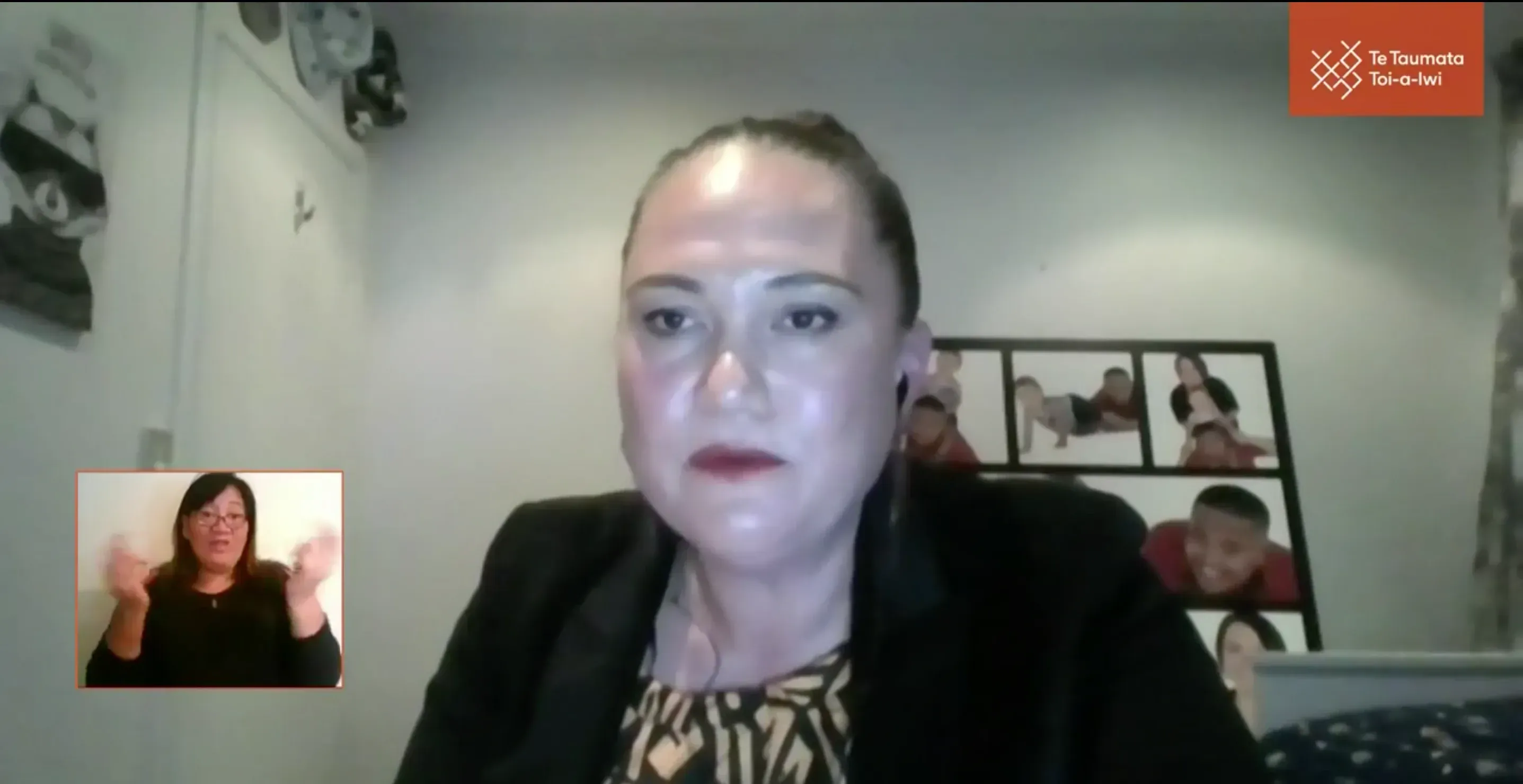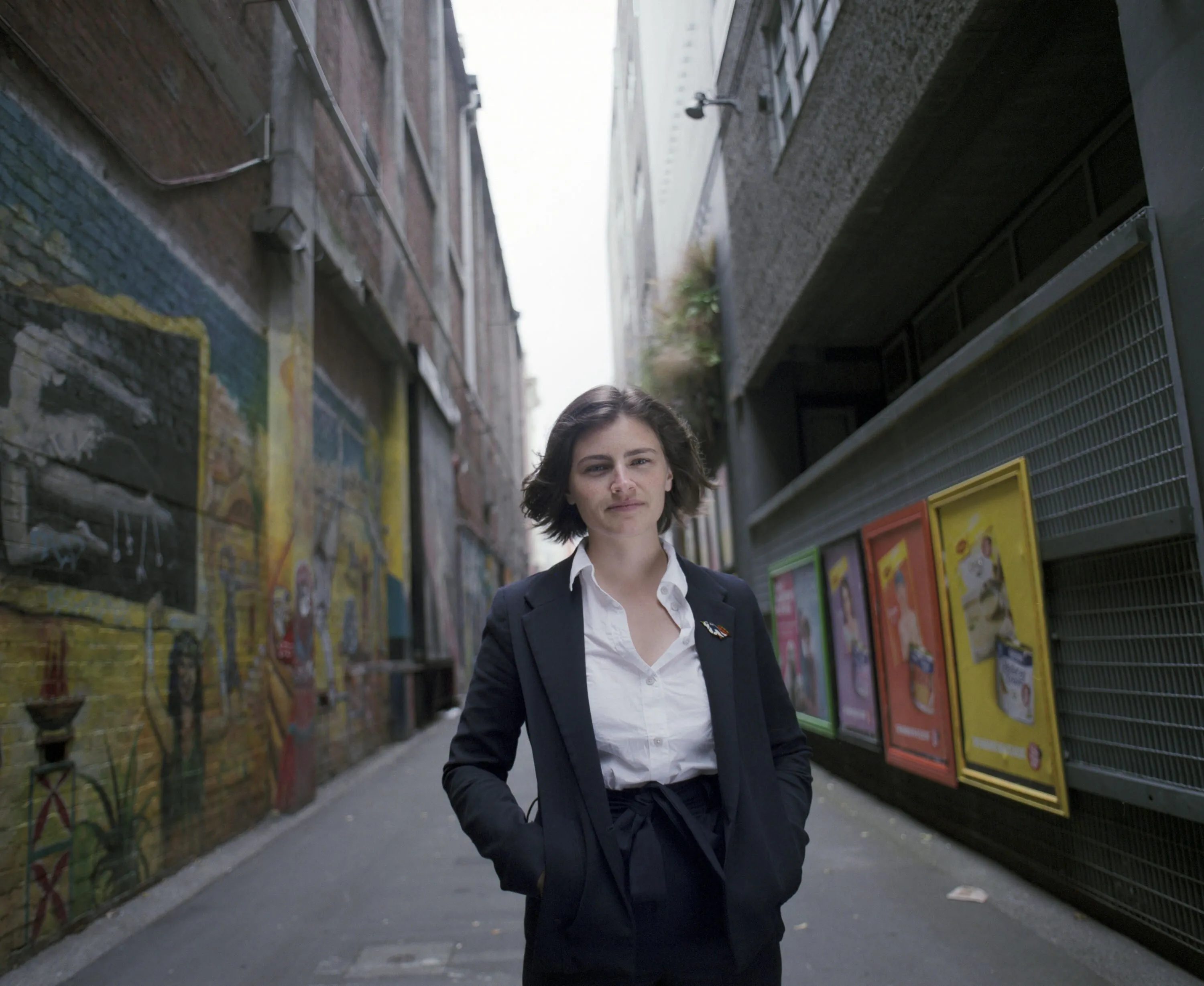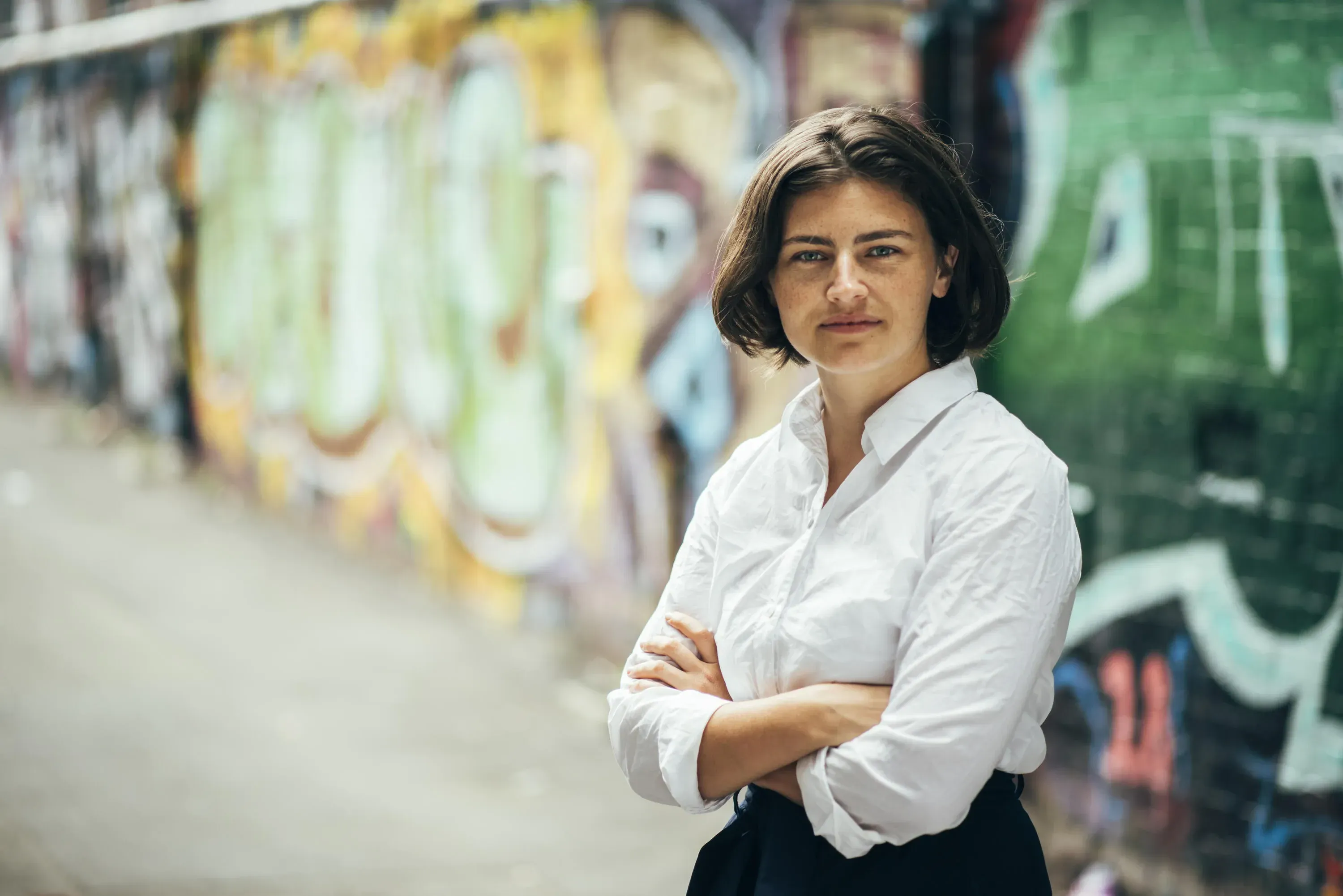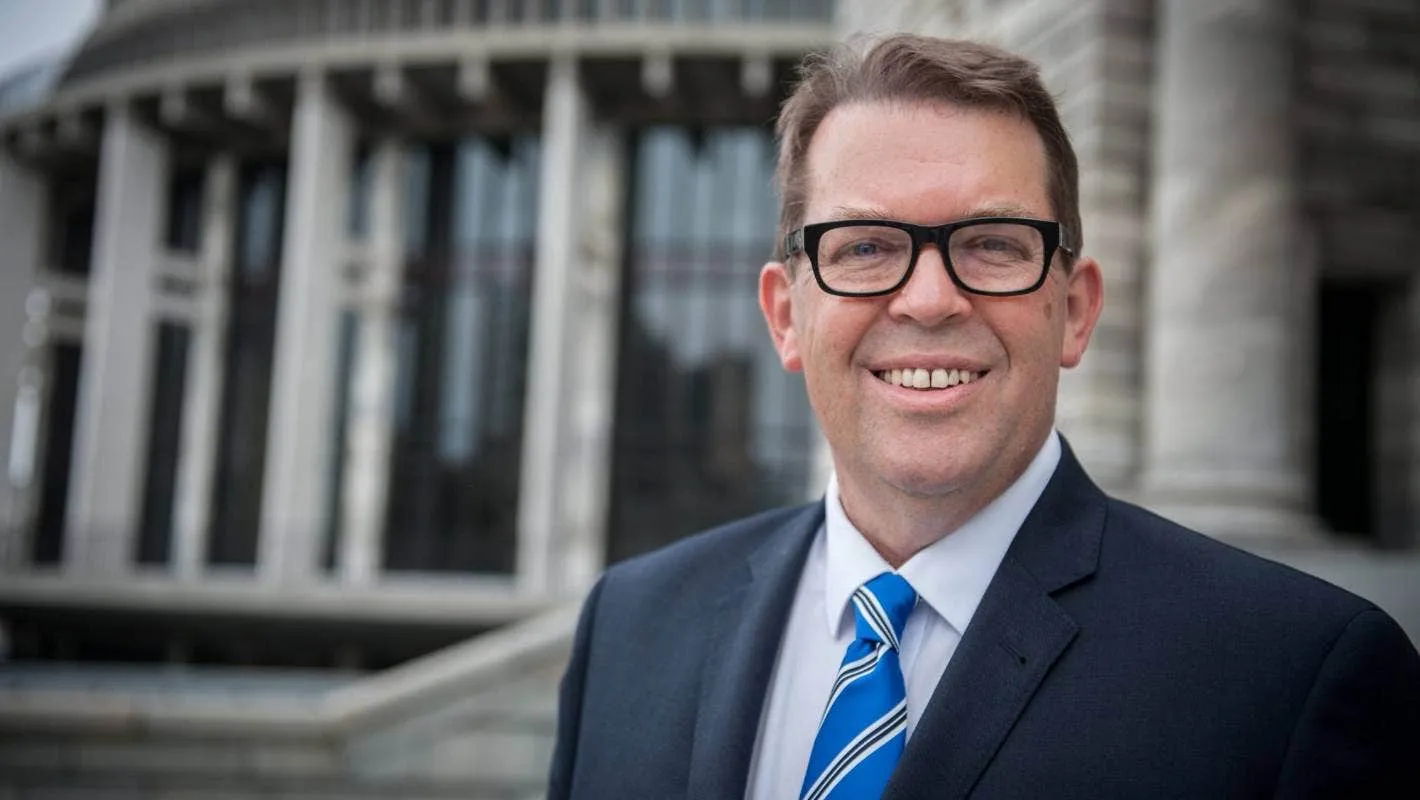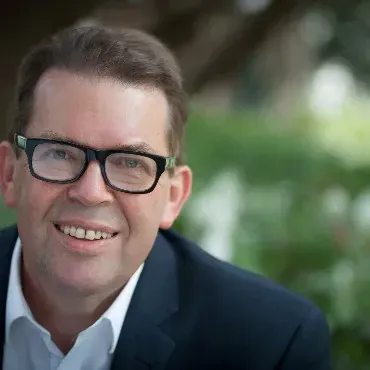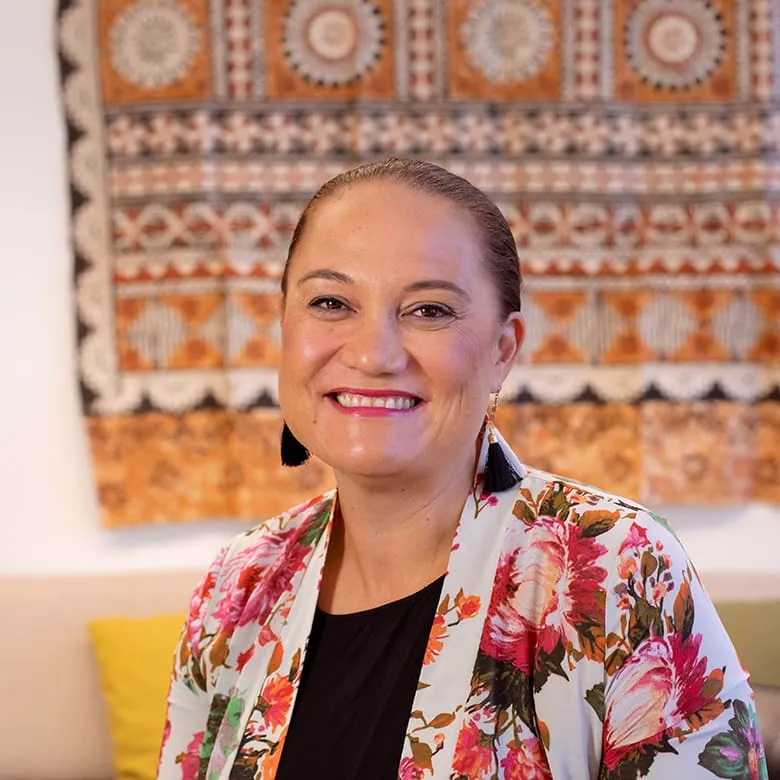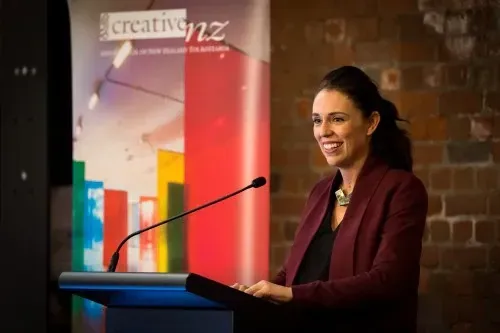Lowdown on Arts Policy
Written by
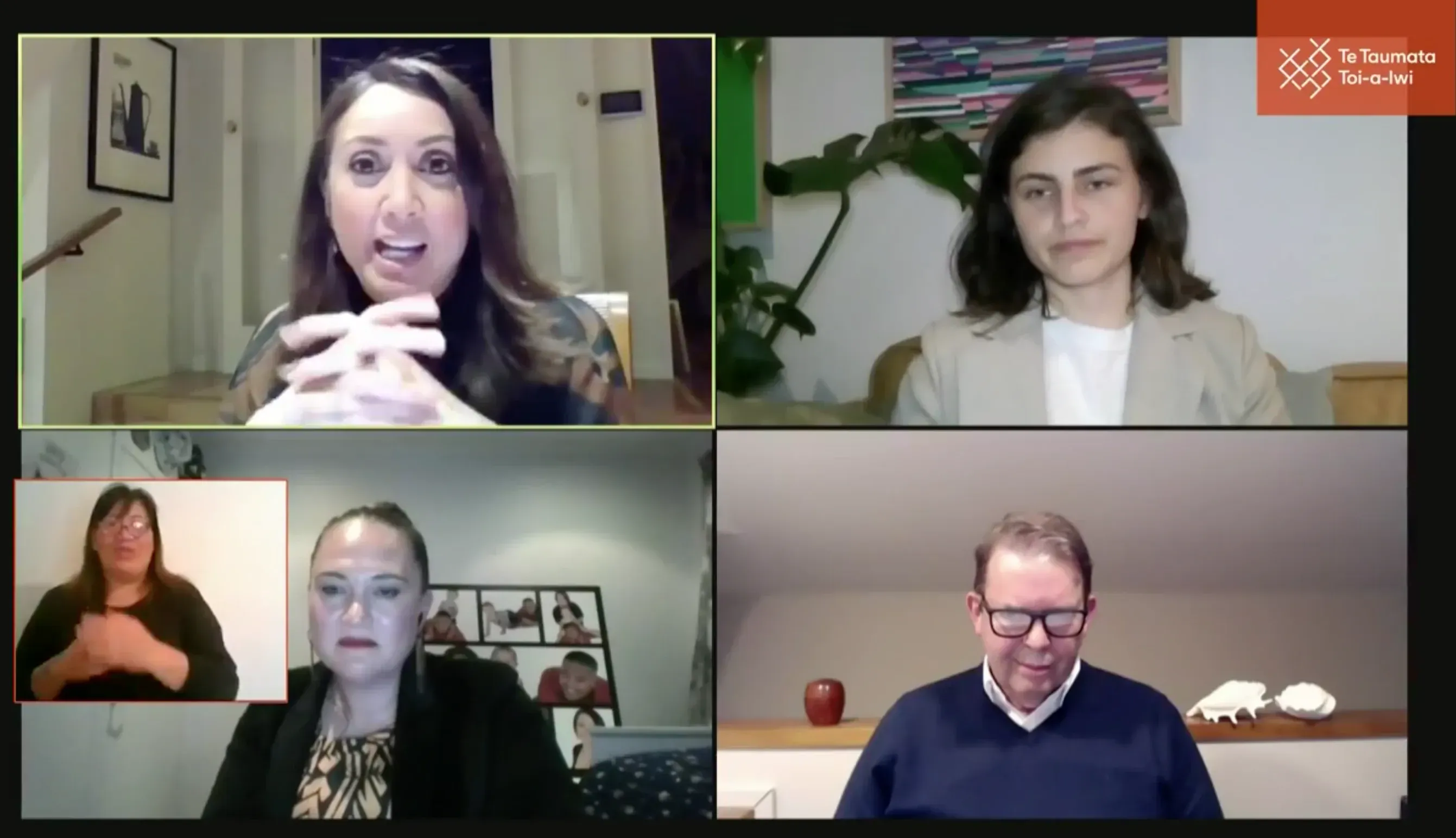
This article is shared in partnership with our friends at Te Taumata Toi-a-Iwi.
I was ready to tell you things were as dull as a COVID-era leaders debate. That I wanted more storytelling; a bit of a song and dance; someone to put on a show. Maybe some stand-up from writer Eamonn Mara - responding to the Taxpayer Union’s criticism last week of the government giving him $13,000 to write the first draft of a novel “about male affection in hypermasculine spaces”.
Instead, this was (or is, here for you to view) a relatively gripping 90 minutes, with plenty of enjoyable eye-rolling for all, ably organised by Auckland arts development agency Te Taumata Toi-a-Iwi. It revealed much about attitudes towards the arts within the three most important political parties in this election race - Labour, National and the Greens - and some very different concepts of what actually having an arts policy means.
This forum now gives numerous recently rejuvenated arts advocacy groups ground to demand some cross-political party strategy to match the nice rhetoric. Because what we saw was a genuine feeling there might be enough consensus over the next three years to see some progress in the stronger embedding of the arts across society.
But then, we’re not used to expecting much. Three years ago, the level of value placed on the arts was apparent by its complete absence in discussion in the lead-up to the election. COVID has changed all that. Now we say yes to novels about male affection.
Moderator Miriama Kamo was another key reason why this discussion felt vital. For the first time in two decades, the political parties were put under critical pressure about the arts by an excellent broadcaster. She insisted on considering the role of the arts beyond crisis recovery. We’ve got used to Arts, Culture and Heritage Minister Jacinda Ardern’s moving, eloquent words on the value of the arts. What we’re not used to is media questioning to expose the lack of detail behind it. On the strength of this performance - under the strain of hosting from home, via Zoom with a dog threatening to yap - Kamo should demand her own arts current affairs show. It brought back memories of her early broadcasting work as a reporter for arts television programme backch@t. Art on television, remember that?
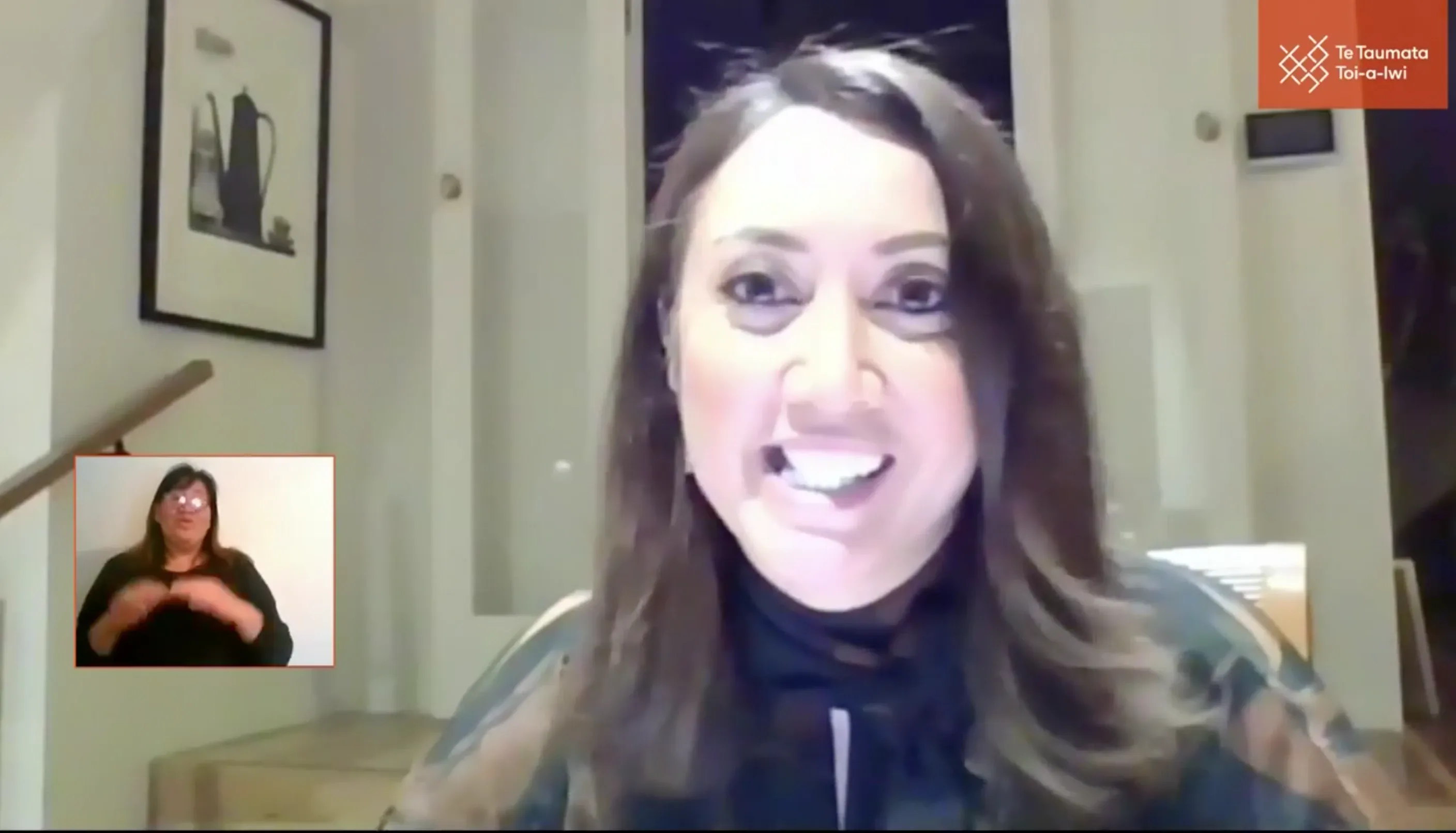
Miriama Kamo did an exceptional job as moderator of the election forum.
In a time when we need it, Kamo could also be aspirational, even when the party spokespeople weren’t. “We do know radical change is possible,” she said in introduction. “We have proven we can meet need when we are forced to. We have the opportunity right now to imagine something sustainable, something revolutionary and something radically creative.
“This is the moment to change the future for this sector.”
Then there were the gripping tensions of the internet: whether the wifi connection to New Plymouth would see National spokesperson Jonathan Young able to complete an answer. The several technologically-induced dramatic pauses at times left the sign language interpreters holding the floor. The drama!
Where is the long term strategy?
Kamo deftly set the scene. The arts under COVID are suffering and yet, ironically, arts and culture contribute nearly $11 billion to GDP and create 90,000 jobs. “So it suffers even as it continues to create considerable value,” she relates. For comparison, I looked it up: Sports New Zealand this year calculated that “the play, active recreation and sport sector contributes $4.8 billion and employs over 53,000 people.”
The second irony, says Kamo, as we enter what has been confirmed will be our worst recession in living memory: the arts are already used to suffering. “To create art in New Zealand is to suffer,” she noted. Over half of those in the sector have to supplement their income outside the sector, and earn a median income of $35,000.
The government’s roll out of a $175 million rescue package after the main budget announcement was, as Kamo put it bluntly, “rolled out unruly” with the announcements “coming in devilish waves”. And then - clearly warming to the poetic opportunity - “the heavens were alight as a veritable cascade of cash poured onto the sector’s head”.
But then, she added biblically, “We know what happens when it rains after a drought.”
The clear issue being signalled for ensuing discussion was the danger of funds being given out without “a robust structure to deliver it.” That this government runs the risk of a run-off of funds if there is not good bedding in of the ground on which it falls.
Kamo’s questions reflected concerns I’ve been hearing a lot: Where is the long-term strategy? Where is the engagement plan? And how will the outcomes be measured?
Policy on the Arts
Kamo gave each spokesperson a chance to outline their arts policy. As warm up ahead of the discussion, The Spinoff’s Sam Brooks had already summed up nicely what he could gather from questions put to each of the participants.
Carmel Sepuloni, for Labour, Associate Minister of Arts, Culture and Heritage, did not have a written arts policy from her party to provide. Instead she spoke of their policy as aligning with their general five-point plan to “keep New Zealand moving”. Indeed she kept on-message by providing it almost word-for-word: “It is about investing in people. It is about jobs, jobs, jobs in the arts sector. It is about preparing for the future and, less obvious, I believe it is also important to invest in small business, and also positioning ourselves globally, because we know our arts help us do that.”
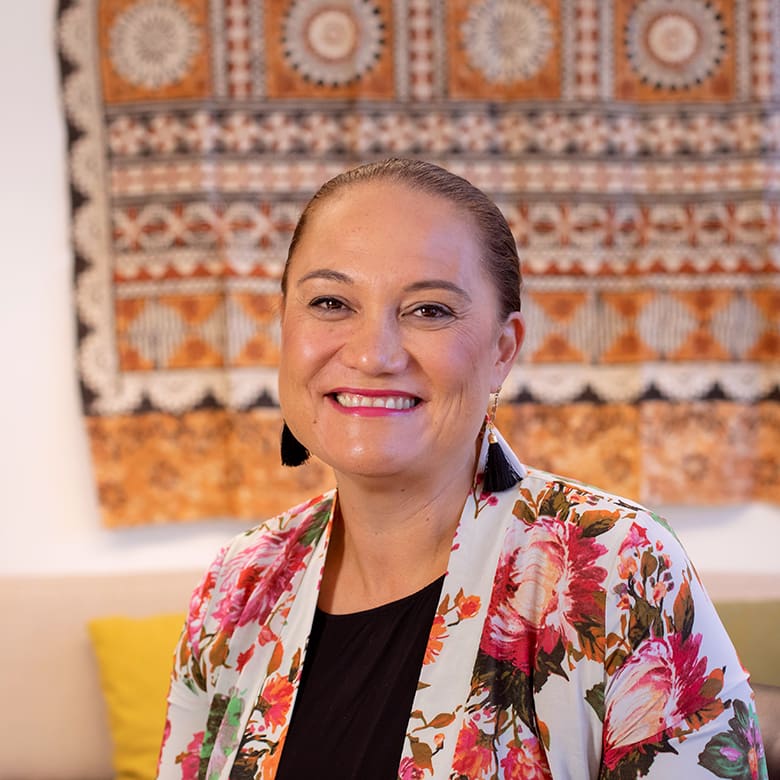
Hon Carmel Sepuloni.
Where then, Kamo rightfully asked, is your actual arts policy? There’s no indication one will be forthcoming. Instead, Sepuloni stressed where they have put their funds outlines their strategy. There will, she said, be no u-turn from the Labour party on this support.
“The list provides a clear picture of our commitment... funding for career support, for jobseekers, a creative arts recovery and employment fund, a cultural innovation fund, a cultural capability fund… and a range of other things including a screen production fund. There’s investment in Mātauranga Māori and for the first time in Pacific…”
And Kamo had to stop Sepuloni there, as she was over time, passing to Chlöe Swarbrick from the Greens.
Swarbrick talked about the need for moving beyond just recovery - from sustainability to regeneration. For the arts before COVID, “business as usual wasn’t working all too well.”
The Greens could point to an actual policy, ratified by the party in 2014. Though you’ll have to search hard to find it, the refreshed one is outlined in Brooks story. They too have much work to do in terms of the reality of party consensus to meet Swarbrick’s aspirations and make it a priority.
Swarbrick spoke of how important it was to the Greens to acknowledge Te Ao Māori, in the ilk of Sir Mason Durie’s ‘Te Whare Tapu Whā’, providing four cornerstones of wellbeing as has been adopted by the Ministry of Health. In the arts, this sees a focus on our sense of identity and its overlap with our sense of hauora, our mental wellbeing.
But Swarbrick’s main thrust was to ask for cross-party work in the creation of a long term arts strategy. Here she made a smart, easy to grasp call: learn from the creation of the Aotearoa Screen Sector Strategy 2030. This is a sector-led strategy for the next ten years the Prime Minister herself called for in 2019, recently published.
If that can be resourced for the screen sector to lead, why on earth not for the wider arts sector? Unless, perchance, the screen sector is considered big business and that’s what we are led to believe we care most about?!
Then to National. “I’ve got bits of paper here,” Young stated, waving a few, “that specify some of those policy areas that we are going to go with.”
“Hold them closer to the camera, Jono!” interjected Swarbrick sharply. “Let us read them!”
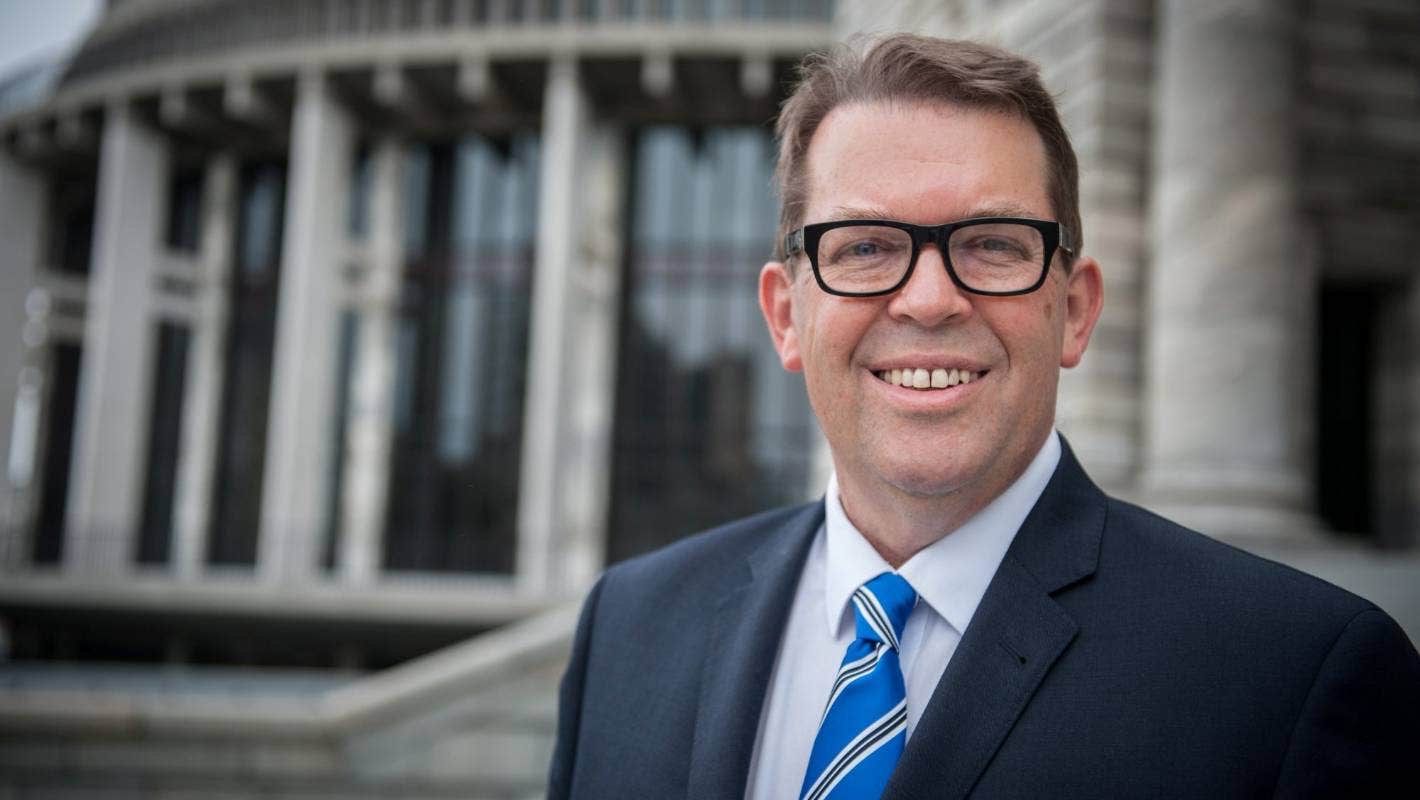
Jonathan Young MP.
In a nice surprise, Young confirmed that they will “probably” release an arts policy “in the next week or so.” In this forum however, he didn’t go into specifics. Key thoughts were the arts’ importance in the vitality of city centres, and the great opportunity to promote New Zealand to the world through arts and culture as a ”must-visit place” in the future. There were some other more waffly and warm broad brushstroke sentiments here: the “wonderful opportunity just to enhance the wellbeing and enhance connectivity in our communities” and the arts as “such an emotional opportunity to connect”, and “the aspect of celebration of who we are, it enhances our identity.” These made Labour’s recovery plan look remarkably concrete.
Kamo, meanwhile, wasn’t about to give up on what she’d asked for from Sepuloni: “The Greens have a comprehensive arts policy already available. Where’s Labour’s?”
Sepuloni returned to noting the significance of the package announced. So, Kamo again asked where the policy was to back it up. Clearly unable to actually say they didn’t have one (I count 18 other policies outlined on the Labour Party website), Sepuloni stressed that Labour’s planned actions spoke larger than words: their stated commitment to Māturangana Māori, for example, cross-sector work across the Ministry of Culture and Heritage and Ministry of Social Development, and commitment to Pasifika festivals. All of that, she said, is a plan moving forward.
But Kamo wasn’t giving up: “When will you release that in a form that can be read and viewed?” To this, no answer.
What is consultation?
That Labour doesn’t have an arts policy, of course is unsurprising. What did come as a surprise was Sepuloni’s assertion, under pressure to reveal a policy, that the recovery package has been something the government had “already strategically thought through with the sector.”
Given the principle job of consulting on behalf of the arts, culture and heritage ministers, no doubt Sepuloni has, as she says, spent during lockdown “many hours on Zoom with cohorts across the arts sector to ask what was needed, not just for survival but for sustainability.” But this falls short of an extensive consultation process with a diverse sector beyond a crisis. Certainly it wasn’t formalised with any publicly notified process.
Framing arts strategy just around recovery is problematic, given Kamo’s earlier stated statistics around artists’ livelihoods and the language around the arts essentiality. What it has shown up is the work not done ahead of 2020. That in part might be excused by the government having to focus on getting the resources for Manatū Taonga, the Ministry of Culture and Heritage back up to reasonable levels. But still, we wait for vision.
Kamo asked Sepuloni repeatedly about her consultation with the arts sector. “There would be a fair few,” Kamo said, “who would say that’s not been effective.”
“Well I live with an artist, that helps, that’s one,” Sepuloni replied, before adding, “That’s not my ‘My husband’s a Samoan’ moment, by the way.”
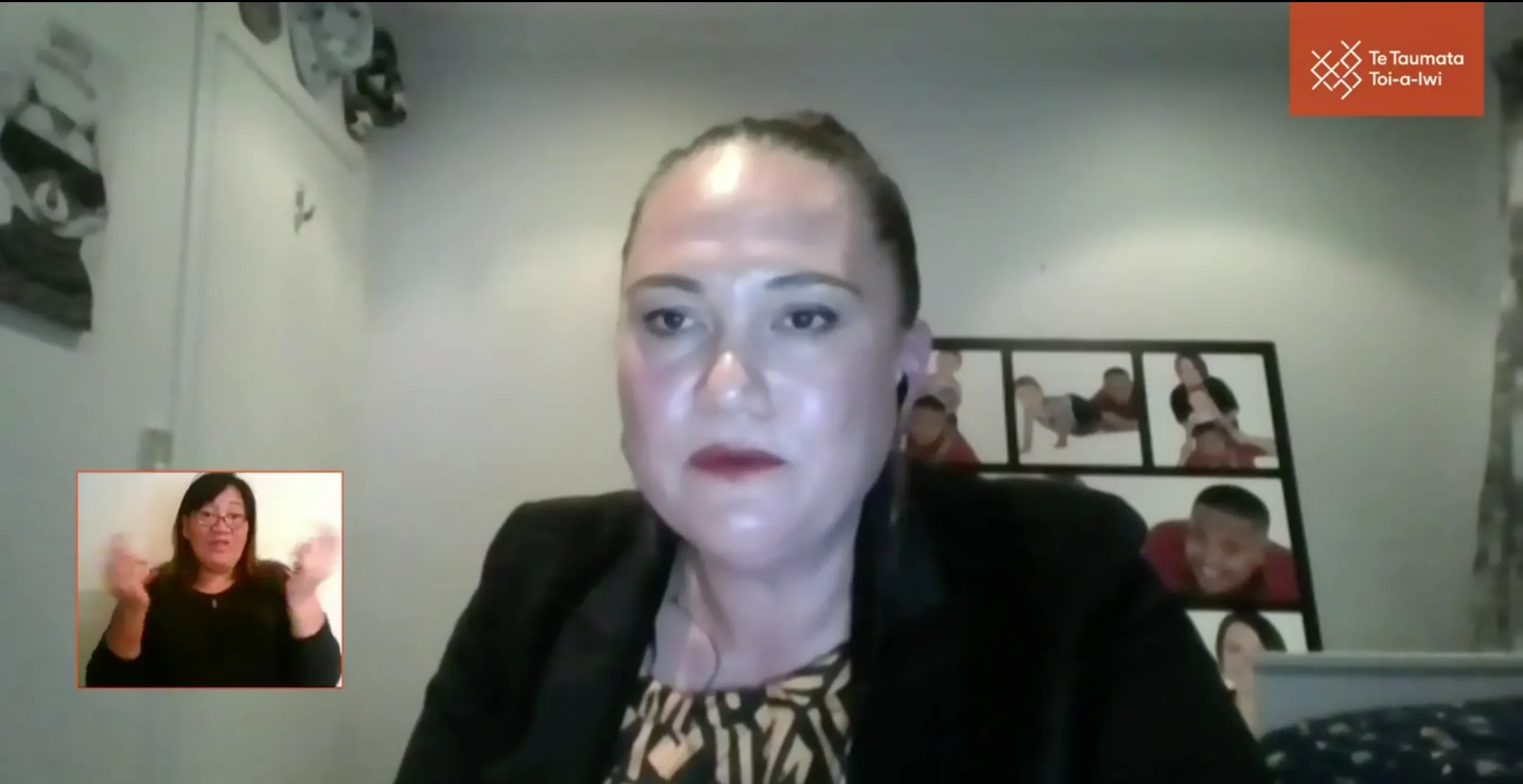
Carmel Sepuloni faces some tough questions during the election forum.
Unfortunately, it was. Yet husband Daren Kamali does, by the way, look likely to be a handy adviser: he is an experienced poet, writer, musician, mentor and teacher. That has to be a head start.
Picking up on Sepuloni’s assertion of a plan, National’s Young said that, on asking Prime Minister Ardern what sort of advice she received regarding all of the allocations in the COVID response fund, “there wasn’t any information given to us as to the depth of consultation.”
Both Young and Sepuloni welcomed Swarbrick’s assertion of the need for a long term strategy. Young considered the co-design process “critical” and something National would be totally committed to going forward, beyond just COVID recovery. He saw this as an area in government where there “could be quite solid cross-party support”.
Young also made an important confirmation: if National are in government, they would continue to support the art recovery package: “How can we take this once in a lifetime opportunity to reimagine what the sector can do?”
Measuring the benefits
If there was an area in which the parties crucially differed, it was in the principal benefits of the arts to the nation.
Sepuloni raised the issue of a lack of research to show the impact of the arts and culture in health and wellbeing. “I’ve commissioned some research in creative spaces,” Sepuloni commented, “and it’s clear the benefit that has in mental wellbeing… there is more to do.”
Indeed, it was a concern for many in the arts sector last year that, when the government released a Child and Youth Wellbeing Strategy, the arts were absent from the learning and development indicators.
While Sepuloni talked wellbeing, Young placed central the role of the arts in economic recovery in terms of hospitality, tourism and city centre revitalisation. He even briefly started talking about the review of copyright laws, in order to ensure what we invest in is not just taken. This isn’t “just about national wellbeing, it’s about national GDP. I think sometimes you have to talk that language to get the economic people engaged.”
This was a red rag for Kamo, and for Swarbrick.
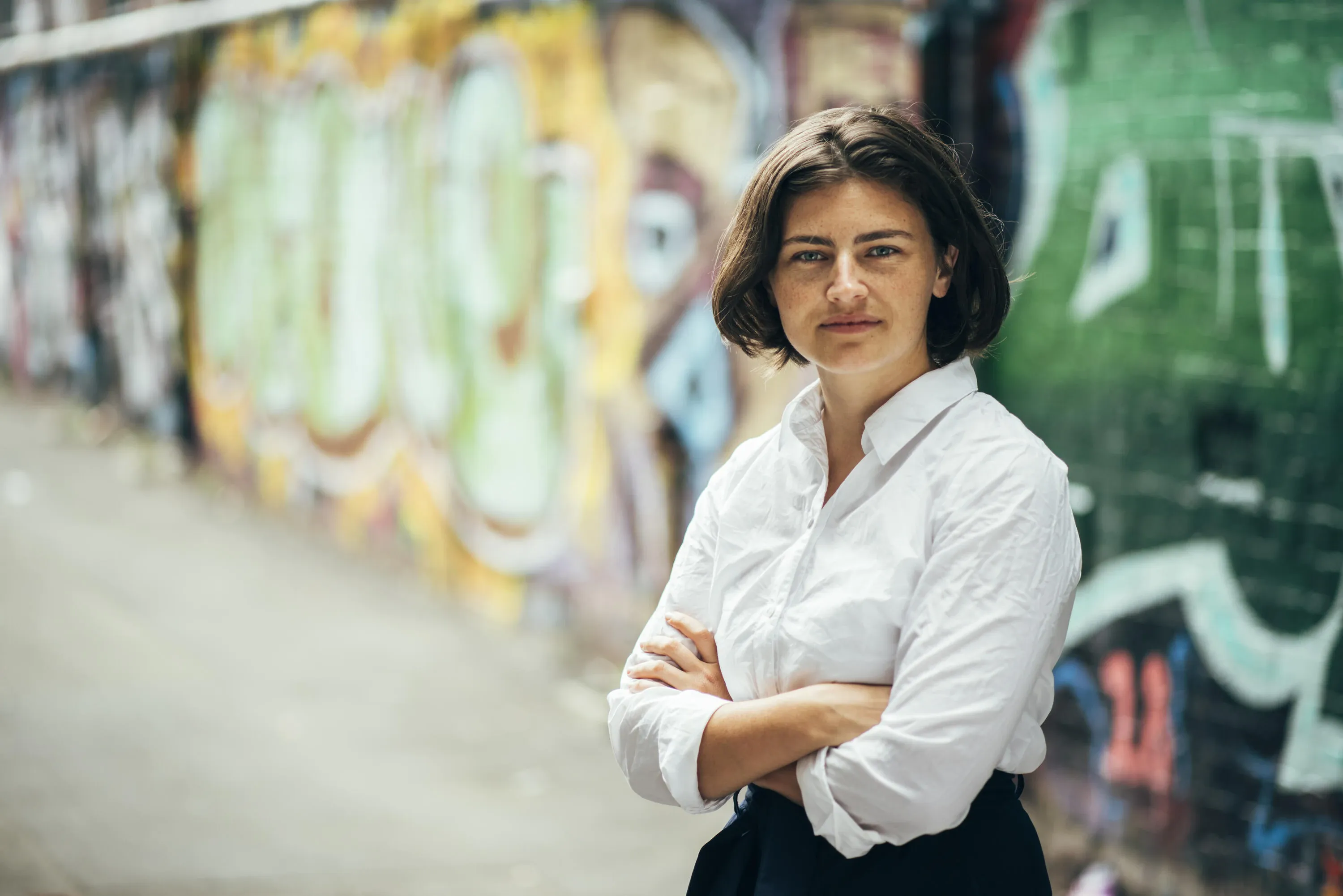
Chlöe Swarbrick MP.
“Often times,” said the eloquent Green MP, “people who attempt to justify things in economic speak are sometimes rather disingenuous in doing so… GDP does not distinguish between the quality of transactions nor the distribution of them. GDP goes up when someone gets cancer or when someone is in a car crash or there’s an oil spill, because there have to be economic transactions to undo that social ill. So actually, I really push back on our need to talk about it from a GDP or economic perspective...
“The economy is by very definition the allocation of our resources and what we value.”
This opened an opportunity for Sepuloni to chip in and demonstrate how Labour takes the centre. Labour, she said, was about both National’s economic argument and the Green’s social wellbeing one.
“I see that with Māori and Pacific artists; we’re not just out there for the sake of dancing.”
Funding as a lottery
At this point, Swarbrick introduced a second clear proposed action for which there was in principle at least support: to unyoke Creative New Zealand funding from gambling. Creative New Zealand receives the majority of its funding from the New Zealand Lottery Grants Board (67% was quoted, it used to be higher), a state of affairs at odds with wellbeing outcomes.
“It’s admirable you raise this,” said Sepuloni. She called it “a good thought” but went on to say that a longer-term conversation would be needed: “we’re not in a place to shift from it right now and I am not going to pretend we are.”
Swarbrick strongly questioned this. “Having funding from Lotteries that is ring-fenced for arts and culture is an anomaly inside our funding system at present. The fact that we are upholding it is a perversity and it could disappear relatively overnight if there was the political willpower…. All that funding otherwise would just go into the pot.”
While agreeing with Sepuloni’s pragmatics, Young also agreed with the sentiment. There is a need, he said, “to shift away from funding models based on doing harm.”
Sepuloni suggested that given the issues around COVID, this is not an issue that's front of mind right now for artists. But what artists wouldn’t want to change? Again, we come back to having a policy. Would it be so difficult for the government to state an aspiration to change something that even the National party sees as demonstrably wrong?
Toi Māori
Kamo asked about the place of Toi Māori in the respective parties’ arts policy. The absence of Māori spokespeople on the arts in Parliament is notable. Indeed, so is their absence in leadership positions across major arts organisations.
Kamo raised criticism of the recent leaders’ debate as having virtually no mention of Māoridom. She also raised recent criticism of systemic racism in funding decisions.
In reply, Young from National spoke of Toi Māori as being at “the very centre” of their policy, yet he unfortunately made it sound like it was key in marketing a product. It is “an international point of difference” and “a very powerful form of expression that ought to be more and more acknowledged and celebrated.” Young came to ”the treaty issue” last. There was no real indication there that there was a political bicultural essentiality to such support.
“I don’t hear any specific plan here,” Kamo said in response. Young - through perhaps welcoming intermittent internet connection at this point - continued to speak of Toi Māori “as increasingly important.”
Swarbrick started with the need to honour the treaty: ”Short of repealing the entire way our parliament operates, in an inherently colonial way, there is something pragmatic we can implement - it would be half of what we’re looking at”.
With this, she briefly seemed to suggest a 50/50 split of funding between Māori and non-Māori to assist addressing inequities. Swarbrick further suggested taking a Te Ao Māori approach to tikanga might form part of the cross-party long term strategy suggested.
Commenting on The Big Idea Facebook live comments, arts strategist Tim Walker puts it well: “Te Ao Māori is a set of world views which if applied across a sector strategy would be fundamentally transformative.”
Finally, Sepuloni pointed to the number of Māori Labour ministers she can take advice from, the numerous deliberately ring-fenced funds in place for Māori, and the recent recovery funds secured by her for Te Matatini and Mātauranga Māori.
Local Authorities
“Don’t forget the regions,” was an important note Swarbrick dropped into the conversation.
Surprisingly absent from the draft objectives of the recovery package is regional support, despite mention of touring exhibitions and major public artworks. While the relationship between government and the big traditional direct-funded organisations Te Papa, Te Matatini, RNZB and NZSO is clear, developing projects and artists in the regions are often reliant on small Creative Communities grants and precious little infrastructure, the purse strings held by councils with sometimes limited understanding of their needs.
The Provincial Growth Fund has been providing welcome investment to new cultural build projects regionally. But over fifty years, we’ve proven great at constructing new buildings and less at providing the funds to allow them to grow and thrive. When he speaks of city revitalisation, National’s Young would do well to consider that in his region, the New Plymouth City Council has cut funding to its cultural jewel, The Len Lye Centre and Govett Brewster Art Gallery, and enforced an admission fee.
The GLAMs (Galleries, Libraries and Museums) are often suffering, falling outside of CNZ or central government direct funding, reliant on their councils. Museums and venues have had recent recovery injections from the government but, again, what is absent is future strategy and an assessment of where regionally there are clear gaps.
Even in Auckland fears are such that the Auckland Art Gallery director Kirsten Paisley remarked to me in a recent arts news bulletin regarding the recent funding announcement on behalf of other museums that “central government has failed us.”
In the forum, Swarbrick related her recent trip to Invercargill where as their main museum and gallery remain in limbo while the different Southland authorities decide what to do, they’ve taken on a temporary space. “They’ve effectively moved into a closet,” she put it rather dramatically.
“There is a major issue in local government where politicians in central government are able to wag their finger at a growing mandate of issues for local councils... but don’t change the way they’re resourced, and the only way they can do it is increased rates.”
What else was missing?
Another key structural issue Swarbrick could have pointed to is the inequities of a funding structure that sees a small number of traditional national arts organisations with a direct funding agreement with government, while the majority of the rest are funded through Creative New Zealand. It’s another perversity, reflecting old hierarchies, stressed further by the arts recovery package being handled by the Ministry rather than CNZ.
A year ago in Australia, the cracks started to show in a similar way: leading independent artists made an urgent request to cultural ministers to withhold their endorsement of a Major Performing Arts Framework which distributed 59% of Australia Council funds to 29 companies representing the white western canon (orchestras, opera, theatre, and ballet companies), without peer review and at much higher funding levels. In response, the Australia Council announced changes.
Also missing was discussion on venues. Many reliant on council funding are run by independent trusts and are at risk. In September, the Ministry of Business, Innovation and Employment announced a major regional events fund, but again there’s a lack of an arts and cultural strategy for this to feed into.
Discussion on the Creatives in Schools programme was also lacking. Another great initiative from this government, but there have been concerns expressed across the arts and education sectors about the process and speed by which it has been rolled out. In terms of consultation, Kamo’s words echo: “We know what happens when it rains after a drought.”
Leading figures in the education sector have called for more fundamental ways for the arts to be recognised in schools. Key in this has been a call for stronger arts policy leadership from central government. As arts curator Janet Bayly put it on The Big Idea’s Facebook comments section, “Artists shouldn’t just be ‘allowed’ to be part of the education sector, they should be naturally embedded into it at every level - it is not the ‘luxury’ add on but holistic.”
Also absent from this election forum, Grant and Jacinda.
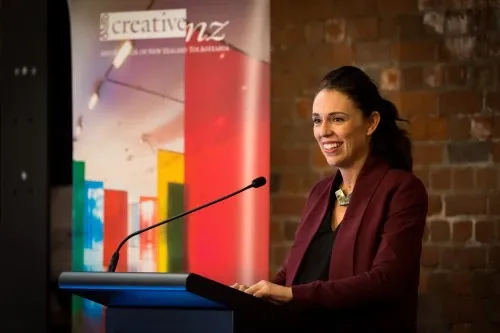
Jacinda Ardern in her role as Minister of Arts, Heritage and Culture.
It’s understandable that both Robertson and Ardern had respective leadership and finance debates last week, and it’s also welcome to see Sepuloni step up. Yet with the portfolio split, there’s the fear out there that while this is a government that cares deeply about the arts and is prepared to put its money where its mouth is, it hasn’t developed a unified clear vision on the arts, providing true leadership to see the arts play a more progressive, embedded role across society.
Summing up value
I leave the last words to a panellist. When asked to sum up the value of the arts and how to implement it, Swarbrick, seemingly talking off the cuff, put it eloquently.
”It provides the glue. It is culture, and culture from a design point of view is a shared set of values. That is what brings together a society that is by no means homogenous… For me, our culture as Aotearoa New Zealand - as we have had little snippets of dialogue about today - has massive potential to provide us platforms to meaningfully inspect who we are and who we can be, to reflect on things, really challenging topics.
“In terms of how we do that and how we support our artists and technicians, I think it is moving away from just seeing it as a ‘nice-to-have’ and moving towards the genuine development of that long term strategy and the money to back that up because we’ve seen from this government there is a commitment in that direction. We just can’t let it exhaust after these two years. Those two years have brought us some runway.”

